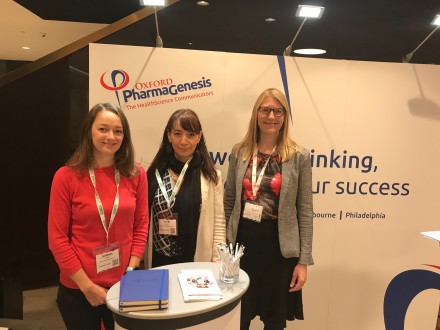In mid-November Barcelona played host to the World Orphan Drug Congress 2019, Europe’s largest commercially focused conference for the rare disease community. Representatives from Oxford PharmaGenesis were in attendance over the 3-day meeting. The conference was broad-ranging in terms of sessions and speakers; however, there were some sessions of particular note.
The complex challenges of orphan drug repurposing and follow-on product development, as well as how to incentivize industry, were hot topics for debate. Fewer than 11% of biological orphan drug-designated products have biosimilars in development. The barriers to drug repurposing were identified as regulatory, financial and access. A clear solution to incentivize industry is not yet apparent, but a call was made for companies and regulators to collaborate to facilitate greater orphan drug repurposing in the future.
An interesting session focused on the current challenges of cross-border access for patients receiving cell and gene therapies in Europe. The delivery of these treatments is limited to only a handful of centres of excellence across Europe because specialist infrastructure, controlled distribution and stringent quality control are all required. Thus, cross-border access is a substantial challenge. In discussions chaired by Nicola Allen and Akshay Kumar (Partners4Access), potential solutions were considered. These included creating clear clinical pathways that are homogenized at a European level (this needs to be supported by industry and patient advocacy groups), organizing bilateral agreements between countries, and for payers to consider whether a product is not yet available in the country but is available elsewhere.
Transatlantic synergies between innovative payment models in rare diseases were also considered, where the global perspective on how split-cost and performance-based models work was shared, alongside real-world learnings from European pricing models. Mark Trusheim (NEWDIGS, MIT) explained that MIT are acting to steer multi-stakeholder collaborations and have contributed to European Medicines Agency (EMA) adaptive pathways. Doug Danison (bluebird bio) noted that healthcare systems are generally built on a chronic model; bluebird is using annuity-based models with real-data tracking. However, a question arises with curative treatments and on how to get patients back for check-ups. Francis Pang (Orchard Therapeutics) advocated the need for the adaption of payers to the newer, specialized treatments in the rare disease space. For instance, the Health Technology Assessment (HTA) is designed for chronic therapy. Francis noted that not all gene therapies are the same, that data are collected short term but have a lifetime extrapolation and that patients are scattered across hospitals/locations, so pooling data is key for its analysis.
The tools available to reduce uncertainties in evidence generation for specialized treatments for rare diseases were shared by Karen Facey (impact HTA, FIPRA). She described the findings of an initiative funded by companies (Takeda, Sanofi, Celgene, Actelion), where the technical but pragmatic methodology is shared that allows uncertainty for a specialized treatment for a rare disease to be made explicit, so it can be prioritized and addressed in an adequate way. Uncertainties include the size and characteristics of the population, disease natural history and current management, if it is a new treatment (size of effect, what effect, duration), and the health ecosystem. There were at least three dialogues suggested in the lifecycle of a technology that look at uncertainty: early model (pre-randomized clinical trial), value dossier and post-evidence generation.
In an engaging presentation, Philip Nelson (Software Engineering, Google Inc.) described the huge growth over the last 10 years in artificial intelligence (AI) via machine learning. He discussed the huge scope for AI as a tool for screening and improved disease characterization. Accurate, quick diagnosis and deeper understanding of disease characteristics are key in rare diseases due to low patient numbers and disease heterogeneity. He espoused that technology should be simple and confounders should be considered.
The power of patient data is being increasingly recognized. A panel session involving Martine Zimmerman (Alexion), Lesli Nordstrom (NORD), Kristina Larsson (Head of Orphan Drugs, EMA) and Amy Gray (Charcot-Marie-Tooth Association) discussed natural history studies and patient registries. They highlighted that the interoperability of data is of paramount importance to maximize its power. Patient groups should own the raw data and can share aggregate data, which can be owned by bigger groups (e.g. NORD). Barriers to this approach include legal challenges and organizational issues. However, increased collaboration across patient groups can increase the volume of data, improve diversity and reduce silos of operation. The EMA recommends using best-in-class registries as examples for patient groups to follow, so that information on risk assessment, not just on safety, can be captured.
In one of the final sessions, the role of patient advocacy and partnerships in rare diseases was considered. It was highlighted that in rare diseases there are pockets of good patient engagement. Engaging with patients should be done as early as possible and pharma companies should be transparent in their involvement with advocacy groups and should help to manage expectations. It was noted that broader patient representation is needed in clinical studies in general; studies need to be representative and their demographics should match those of the disease. Therefore, improving patient literacy in disease areas and drug mechanisms of action, efficacy and safety is key according to patient groups.

